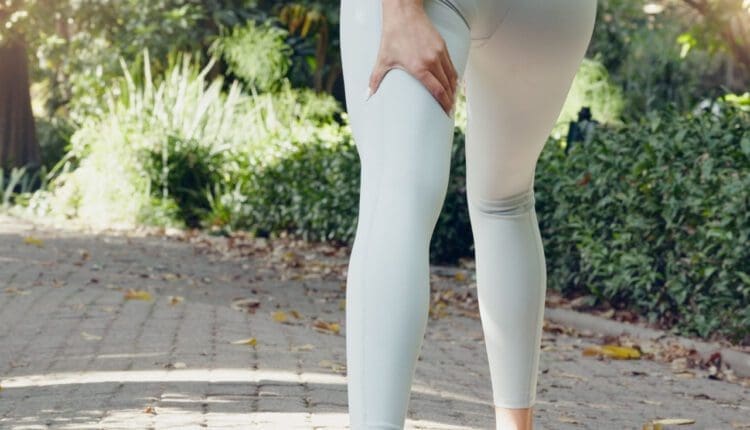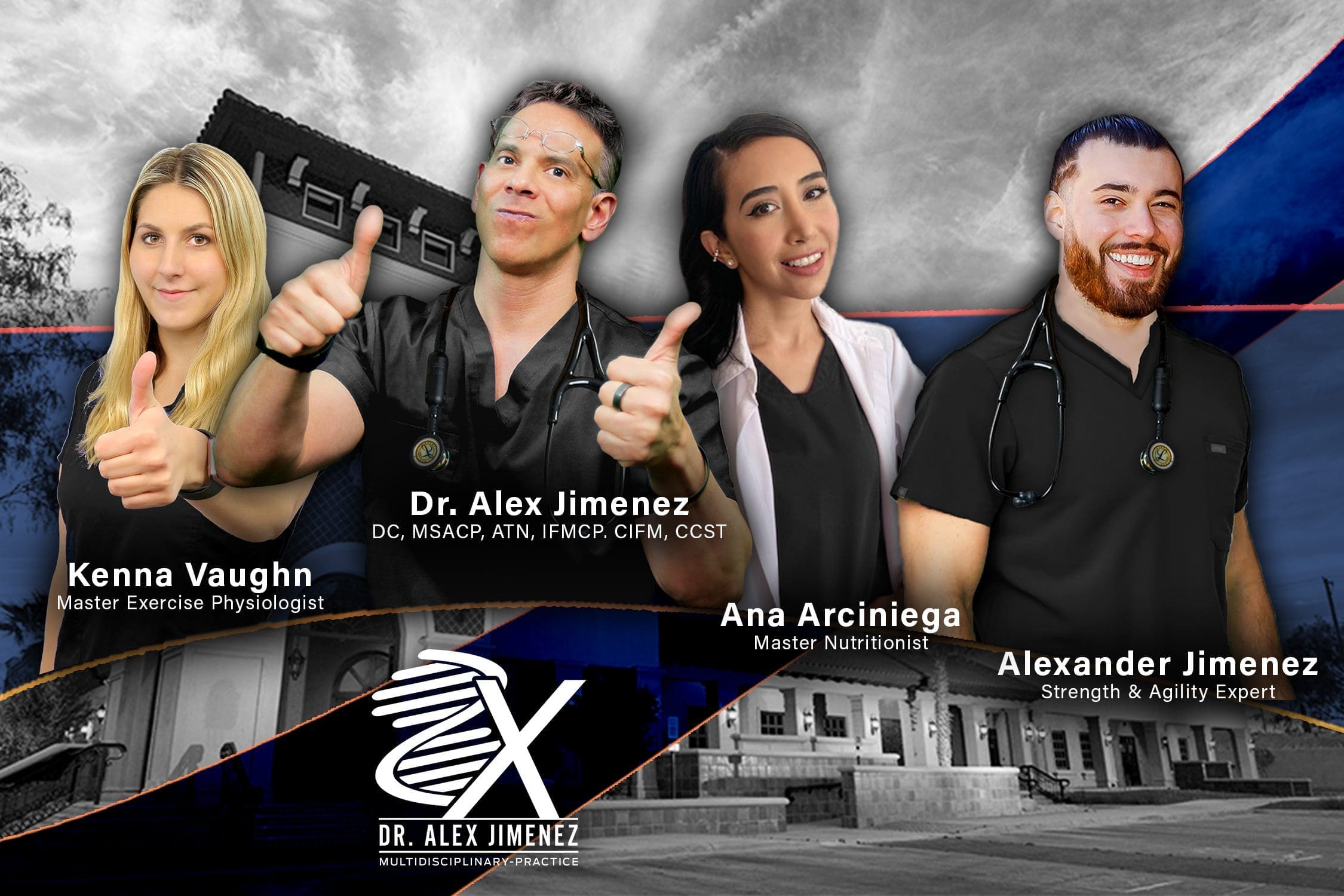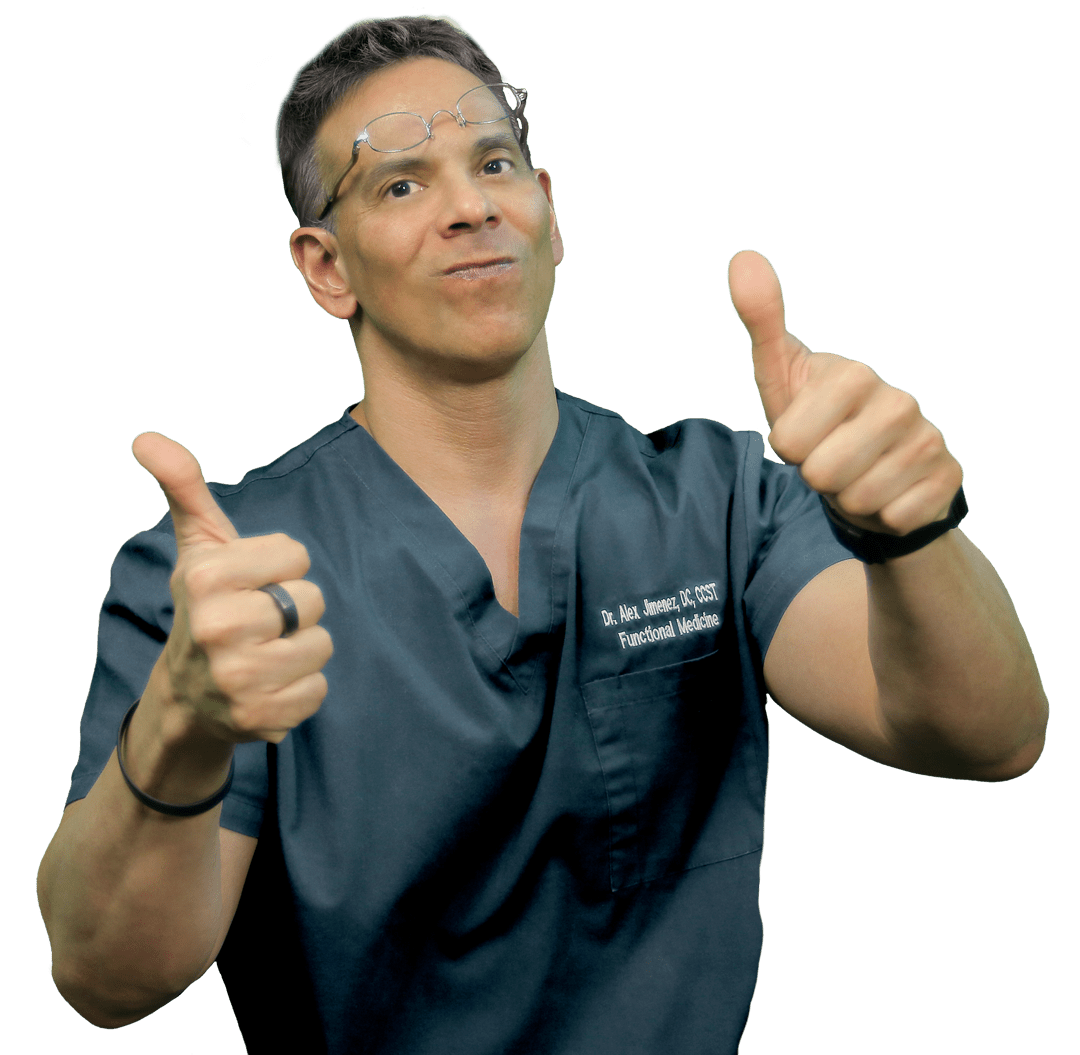Table of Contents
Sudden Movement Injuries vs. Involuntary Movement Disorders: An Evidence-Based Chiropractic Guide to Assessment, Imaging, and Integrative Recovery

Overview
People often use the phrase “sudden movement” to describe two very different problems:
-
Acute soft-tissue injuries from a single, forceful event (for example, a twist, a fall, a collision, or a rapid neck motion in a car crash). These include sprains (ligaments), strains (muscle/tendon), and contusions (bruises) (Johns Hopkins Medicine, n.d.; Cleveland Clinic, 2025a).
-
Involuntary movement disorders (for example, tremor, myoclonus, dystonia, or tics) that are usually neurologic or medication-related, not one-time “injuries” (MedlinePlus, 2024; Verywell Health, n.d.; International Parkinson and Movement Disorder Society [MDS], n.d.).
This article—geared to the evidence-minded chiropractic reader—clarifies the difference, outlines a clean clinical workflow, and shows how integrative chiropractic care supports recovery, documentation, and safe return to activity, while coordinating with neurology or primary care when needed (Cleveland Clinic, 2025b; Cleveland Clinic, 2024b; Jimenez, n.d.-a; Jimenez, n.d.-b).
What Counts as a Sudden Movement Injury?
Key idea: One clear moment pushed tissue past its limit.
-
Sprain: stretch or tear of a ligament, the connective tissue that stabilizes joints (Johns Hopkins Medicine, n.d.).
-
Strain: tear of muscle or tendon fibers from sudden overload (Cleveland Clinic, 2021).
-
Contusion: bruise from a direct blow (Cleveland Clinic, 2025a).
Typical mechanisms include an ankle roll on uneven ground, a hard cut in sports, a lift-and-twist at work, a slip-and-fall, or a rear-end MVA that produces whiplash (Cleveland Clinic, n.d.-b; Cleveland Clinic, 2024b).
Risk factors include a prior sprain or strain, rapid jumps in workload or training, fatigue, poor technique, and worn-out shoes or protective gear (UPMC, 2019; UPMC, 2022; UPMC, n.d.). Addressing these reduces re-injury risk and speeds return to function.
What Are Involuntary Movement Disorders?
Key idea: Movements happen without your control and are not caused by a single external force.
-
Tremor: rhythmic shaking.
-
Myoclonus: sudden jerks.
-
Dystonia: sustained or twisting contractions.
-
Tics: brief, repeated movements or sounds.
-
Tardive dyskinesia: repetitive movements often linked to long-term use of certain medications (Verywell Health, 2024).
Causes include neurologic disease, medication effects, genetic or metabolic problems, and brain injury (MedlinePlus, 2024; EdwardKle, 2023). In children, ataxia (unsteady coordination) may start suddenly with infection, inflammation, or stroke; or it may come and go with genetics or migraine patterns (Boston Children’s Hospital, n.d.).
These conditions often co-exist with musculoskeletal pain because abnormal movement patterns overload tissues. Chiropractic can help with posture, ergonomics, and comfort, while neurology manages the primary neurologic cause (MedlinePlus, 2024; MDS, n.d.; UF Health, n.d.).
How to Tell the Difference (Fast Clinical Cues)
Onset story
-
Injury: there is a single moment (“I twisted,” “I slipped,” “We were hit from behind”) (UPMC, n.d.; Cleveland Clinic, n.d.-b).
-
Involuntary movement: no single external event; movements appear at rest or with action, may wax and wane, and may relate to stress, light, sound, or medications (MedlinePlus, 2024; MDS, n.d.; Verywell Health, n.d.).
Exam and testing
-
Acute injury: check swelling, tenderness, joint stability, and range of motion; use X-ray to rule out fracture and MRI for soft-tissue tears or disc/nerve concerns (Cleveland Clinic, 2025a).
-
Involuntary movement: perform a neurologic exam, review medications, and order targeted labs or imaging if red flags exist (MedlinePlus, 2024; UF Health, n.d.).
Red flags
Seek urgent care for a head injury with confusion, severe headache, repeated vomiting, seizure, or new weakness (Cleveland Clinic, 2024a). After neck trauma, new numbness, weakness, or severe stiffness also needs prompt evaluation (Cleveland Clinic, n.d.-b).
First 48 Hours After an Acute Injury (Evidence-Based Basics)
The RICE method — Rest, Ice, Compression, and Elevation — for the first 24–48 hours helps control pain and swelling (Cleveland Clinic, 2025b).
-
Rest: Avoid painful loading early on.
-
Ice: 10–20 minutes per session with a barrier.
-
Compression: snug elastic wrap or sleeve.
-
Elevation: above heart level when possible.
After 1–2 days, gradual motion and light loading help collagen fibers heal along healthy lines of stress. Your clinician will progress from range of motion to isometrics, then to strength and control (Cleveland Clinic, 2024b; Cleveland Clinic, 2021).
An Integrative Chiropractic Approach (Biomechanics + Medicine)
Goal: reduce pain, restore joint function and mobility, and support the body’s healing—while ruling out red flags and coordinating care when needed.
Core elements
-
Adjustments and joint mobilization: restore regional motion and reduce protective muscle guarding.
-
Soft-tissue techniques: decrease tone and tenderness and support circulation around injured areas.
-
Movement retraining: dose-controlled progressions—from gentle ROM to strength, balance, and task-specific drills.
-
Supportive devices: short-term bracing or taping as indicated (Cleveland Clinic, 2024b).
-
Home plan: early RICE and brief daily exercises to guide tissue remodeling (Cleveland Clinic, 2025b).
For involuntary movement disorders
Chiropractic addresses posture, comfort, and ergonomics but does not claim to cure the primary neurologic condition. The care team coordinates with neurology and the prescribing clinician to optimize safety and function (MedlinePlus, 2024; MDS, n.d.; Verywell Health, 2024).
Imaging and Objective Data (When and Why)
-
X-ray: evaluate alignment and screen for fractures after trauma.
-
MRI: assess soft-tissue tears, disc pathology, or suspected nerve compression when the history and exam support it (Cleveland Clinic, 2025a).
-
Documentation for personal injury: mechanism, exam findings, imaging summaries, and outcomes (pain scales, disability indices, functional testing) show causation, medical necessity, and response to care—critical for return-to-work/sport plans and claim clarity (PainCare Florida, n.d.; UPMC, n.d.).
Evidence-Informed Scenarios
Rear-end collision (whiplash/neck strain)
Neck pain, stiffness, and headaches are common. Early care protects motion, then rehab restores range, postural control, and driving ergonomics. Screen for nerve signs and consider imaging if indicated (Cleveland Clinic, n.d.-b; Cleveland Clinic, 2024b).
Slip-and-fall (ankle sprain or contusion)
RICE reduces swelling, and then proprioception and balance work reduce the risk of re-spraining. A prior sprain is a major predictor of future sprains, so prevention is part of the plan (UPMC, 2019; UPMC, n.d.).
Work injury (lumbar strain from lift-and-twist)
Protect early, then build hip strength and trunk endurance with graded exposure. Teach lift mechanics and micro-breaks. Objective measures track readiness for duty (UPMC, n.d.; Cleveland Clinic, 2024b).
Return-to-Activity Roadmap (Acute Injuries)
-
Days 0–2: RICE; pain-free ROM; avoid provocative loads (Cleveland Clinic, 2025b).
-
Days 2–7: light stretching and isometrics; swelling control between sessions.
-
Weeks 1–3+: progressive strength, balance, and graded loading; add job/sport-specific drills.
-
Clearance: pain-free full range, near-normal strength and control, no next-day flare after test tasks.
Pediatric Considerations
Children get acute sprains/strains in sports and play. They can also present with movement disorders like ataxia or tics. Sudden coordination loss, severe headache, or new neurologic signs need prompt evaluation and age-appropriate plans coordinated with parents, coaches, and schools (Boston Children’s Hospital, n.d.).
The Dual-Scope Advantage (Dr. Alexander Jimenez, El Paso)
Dr. Alexander Jimenez, DC, APRN, FNP-BC, leads a dual-scope integrative model in El Paso, combining chiropractic biomechanics with medical evaluation and, when appropriate, advanced imaging. This links symptoms, movement quality, and objective findings, supporting clear documentation for employers, case managers, and attorneys when personal-injury issues are present (Jimenez, n.d.-a; Jimenez, n.d.-b; Jimenez, n.d.-c; LinkedIn profile).
Clinic workflow
-
Mechanism-focused history (injury vs. involuntary movements), red-flag screening.
-
Orthopedic + neurologic exams and segmental motion testing.
-
Imaging when indicated (X-ray/MRI).
-
Plan of care: symptom control ? mobility ? strength/control ? task-specific reintegration.
-
Outcome tracking and return-to-work/sport guidance.
-
Specialist coordination for neurologic movement disorders or complex cases.
When to Seek Care Now
-
Head injury symptoms: confusion, severe headache, repeated vomiting, seizure, or new weakness—seek urgent evaluation (Cleveland Clinic, 2024a).
-
Neck trauma with numbness, weakness, or severe stiffness (Cleveland Clinic, n.d.-b).
-
New or worsening involuntary movements, especially after a head injury or a new medication (MedlinePlus, 2024; EdwardKle, 2023).
Bottom Line
-
Sudden movement injuries are one-event sprains, strains, or contusions; early RICE and graded rehab restore function (Cleveland Clinic, 2025b; Cleveland Clinic, 2021).
-
Involuntary movement disorders are neurologic or medication-related and require medical evaluation, along with chiropractic support for posture and comfort (MedlinePlus, 2024; MDS, n.d.; Verywell Health, 2024).
-
An evidence-based integrative chiropractic approach—biomechanics, careful dosing of load, and coordinated medical care—helps patients return to work, sport, and daily life with clear documentation and safer outcomes (UPMC, n.d.; PainCare Florida, n.d.; Jimenez, n.d.-a, n.d.-b, n.d.-c).
References
Boston Children’s Hospital. (n.d.). Movement disorders.
Cleveland Clinic. (2021). Muscle strains: Causes, symptoms, treatment & recovery.
Cleveland Clinic. (2024a, August 21). Head injury: Types, symptoms, causes & treatments.
Cleveland Clinic. (2024b, December 18). Sports injuries: Types, symptoms, causes & treatment.
Cleveland Clinic. (2025a, February 21). Soft tissue injury: What it is, types, causes & treatment.
Cleveland Clinic. (2025b, January 24). RICE method: Rest, ice, compression & elevation.
Cleveland Clinic. (n.d.-b). Whiplash (neck strain): What it is, symptoms & treatment.
EdwardKle. (2023, July 20). Causes, types and treatment of TBI involuntary movements.
International Parkinson and Movement Disorder Society. (n.d.). Myoclonus (Jerky Involuntary Movements): Patient education.
Johns Hopkins Medicine. (n.d.). Soft-tissue injuries.
MedlinePlus. (2024, February 9). Movement disorders.
PainCare Florida. (n.d.). Unintentional/accidental injuries.
UF Health. (n.d.). Movement – uncontrollable.
UPMC. (n.d.). Sprains & strains: Causes, symptoms, and treatments.
UPMC. (2019, November 11). Sprains & strains: Risk factors and complications.
UPMC. (2022, November 23). Do I have a sprain or a strain? Know the difference.
Verywell Health. (n.d.). Involuntary movements: Causes and treatment.
Verywell Health. (2024, June 14). Early signs of tardive dyskinesia.
Clinical perspective — dual-scope, integrative, documentation-forward
Jimenez, A. (n.d.-a). Safe chiropractic care in El Paso: What to expect.
Jimenez, A. (n.d.-b). Chiropractic and integrative care for spinal nerve conditions.
Jimenez, A. (n.d.-c). Chiropractic athlete rehabilitation care for sports injuries.
LinkedIn profile: Jimenez, A. (n.d.). Dr. Alexander Jimenez, DC, APRN, FNP-BC.
Post Disclaimer
Professional Scope of Practice *
The information herein on "Sudden Movement Injuries Guide and Treatment Options" is not intended to replace a one-on-one relationship with a qualified health care professional or licensed physician and is not medical advice. We encourage you to make healthcare decisions based on your research and partnership with a qualified healthcare professional.
Blog Information & Scope Discussions
Welcome to El Paso's Chiropractic Scientist wellness blog, where Dr. Alex Jimenez, DC, FNP-C, a board-certified Family Practice Nurse Practitioner (FNP-C) and Chiropractor (DC), presents insights on how our team is dedicated to holistic healing and personalized care. Our practice aligns with evidence-based treatment protocols inspired by integrative medicine principles, similar to those found on dralexjimenez.com, focusing on restoring health naturally for patients of all ages.
Our areas of chiropractic practice include Wellness & Nutrition, Chronic Pain, Personal Injury, Auto Accident Care, Work Injuries, Back Injury, Low Back Pain, Neck Pain, Migraine Headaches, Sports Injuries, Severe Sciatica, Scoliosis, Complex Herniated Discs, Fibromyalgia, Chronic Pain, Complex Injuries, Stress Management, Functional Medicine Treatments, and in-scope care protocols.
Our information scope is limited to chiropractic, musculoskeletal, physical medicine, wellness, contributing etiological viscerosomatic disturbances within clinical presentations, associated somato-visceral reflex clinical dynamics, subluxation complexes, sensitive health issues, and functional medicine articles, topics, and discussions.
We provide and present clinical collaboration with specialists from various disciplines. Each specialist is governed by their professional scope of practice and their jurisdiction of licensure. We use functional health & wellness protocols to treat and support care for the injuries or disorders of the musculoskeletal system.
Our videos, posts, topics, subjects, and insights cover clinical matters, issues, and topics that relate to and directly or indirectly support our clinical scope of practice.*
Our office has reasonably attempted to provide supportive citations and has identified the relevant research studies or studies supporting our posts. We provide copies of supporting research studies available to regulatory boards and the public upon request.
We understand that we cover matters that require an additional explanation of how they may assist in a particular care plan or treatment protocol; therefore, to discuss the subject matter above further, please feel free to ask Dr. Alex Jimenez, DC, APRN, FNP-BC, or contact us at 915-850-0900.
We are here to help you and your family.
Blessings
Dr. Alex Jimenez DC, MSACP, APRN, FNP-BC*, CCST, IFMCP, CFMP, ATN
email: coach@elpasofunctionalmedicine.com
Licensed as a Doctor of Chiropractic (DC) in Texas & New Mexico*
Texas DC License # TX5807
New Mexico DC License # NM-DC2182
Licensed as a Registered Nurse (RN*) in Texas & Multistate
Texas RN License # 1191402
ANCC FNP-BC: Board Certified Nurse Practitioner*
Compact Status: Multi-State License: Authorized to Practice in 40 States*
Graduate with Honors: ICHS: MSN-FNP (Family Nurse Practitioner Program)
Degree Granted. Master's in Family Practice MSN Diploma (Cum Laude)
Dr. Alex Jimenez, DC, APRN, FNP-BC*, CFMP, IFMCP, ATN, CCST
My Digital Business Card





 Again, We Welcome You.
Again, We Welcome You.
Comments are closed.